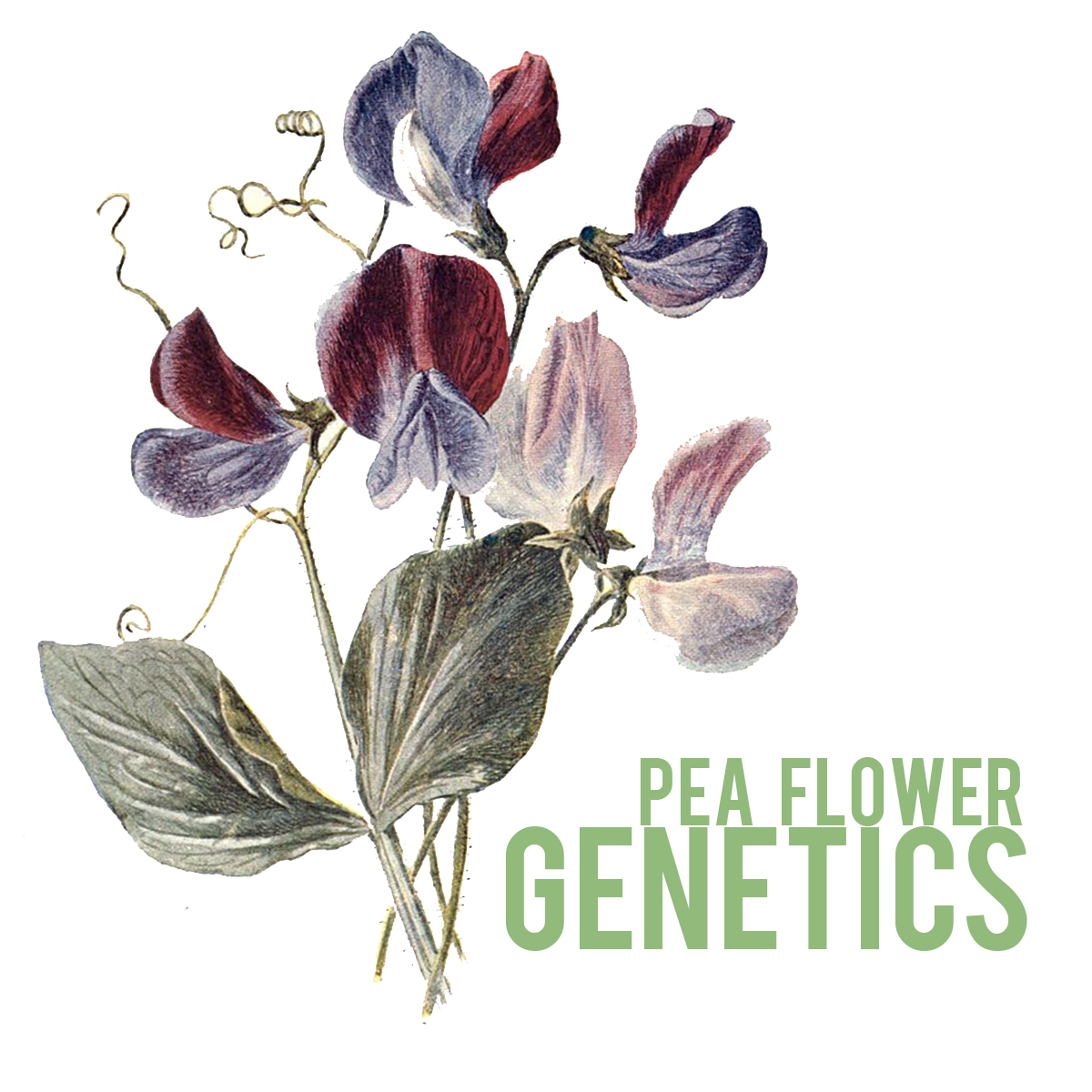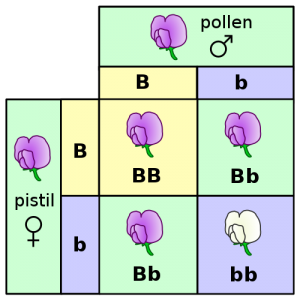
Genetics can seem like an intimidating subject, one that’s only meant for molecular biology PhD students and tenured professors. While genetic inheritance is extremely complicated and closely tied into gene expression (a subject that still has much to be discovered and understood), the basics of genetics and genetic heredity can be easily explained using something as simple as the color of a pea flower…
The year is 1865, a time when all genetic traits were believed to be passed on from parents to their offspring by simply “mixing’ together to produce a perfect blend. A highly educated Austrian monk works in his garden, attending to his pea flowers and decides to conduct some experiments to test the heritability of flower color. He takes two types of peas, ones that produce purple flowers and ones that produce white flowers, and decides to cross breed them. What he discovers is that there’s a pattern to genetic heritability and would quickly dub him the “father of modern day genetics”.
So what was is that Mendel discovered? Time to jump into our genetics lesson! When Mendel crossed the purple flowers with the white, he realized that the offspring flowers were majority purple with a ratio of 3:1. After many more experiments cross-breeding further generations of flowers, Mendel concluded that the color of the pea flowers was determined by a single locus or gene. In order for that gene to produce two different colors, it must be made up of two factors known. These factors are known as alleles and for each biological trait there are two sets of alleles. But how can those alleles interact to create different color pea flowers?
The best way to truly understand how the two alleles at a gene interact is to check out the classic punnet square below.
 If a purple and a white flower are crossed and most of the resulting flowers are purple, then the allele that leads to a purple flower must be dominant, meaning that only the offspring that end up carrying both of the alleles for white will actually end up being white. So, a purple flower could carry an allele for being white, but if it also carries an allele for being purple, it will be purple. Dominant and recessive alleles make it easy to determine the traits of an offspring, but heritability isn’t always that straight forward.
If a purple and a white flower are crossed and most of the resulting flowers are purple, then the allele that leads to a purple flower must be dominant, meaning that only the offspring that end up carrying both of the alleles for white will actually end up being white. So, a purple flower could carry an allele for being white, but if it also carries an allele for being purple, it will be purple. Dominant and recessive alleles make it easy to determine the traits of an offspring, but heritability isn’t always that straight forward.
Along with dominant and recessive alleles, you can also have alleles that show incomplete dominance. If the purple and white alleles in the flowers showing incomplete dominance, a flower with both alleles would simply be light purple, a literal mix of white and purple. Similarly, you can have alleles that show codominance, meaning that both colors would be expressed and you’d find yourself with a flower that was splotched with both white and purple patches. Of course, just because a gene has the presence of a specific allele doesn’t always mean that the trait the allele codes for will be expressed. That’s because not all traits are controlled by a single gene. This is when genetic heritability becomes extremely complicated and we hand all explanations and research over to the professionals. But just in case you’re ever asked how genetic inheritance works, you can always turn to pea colors and thank Mendel for his very impressive gardening skills.

